.

American Bison (Bison bison): photo by Jack Dykinga, 28 September 2005 (U. S. Department of Agriculture)
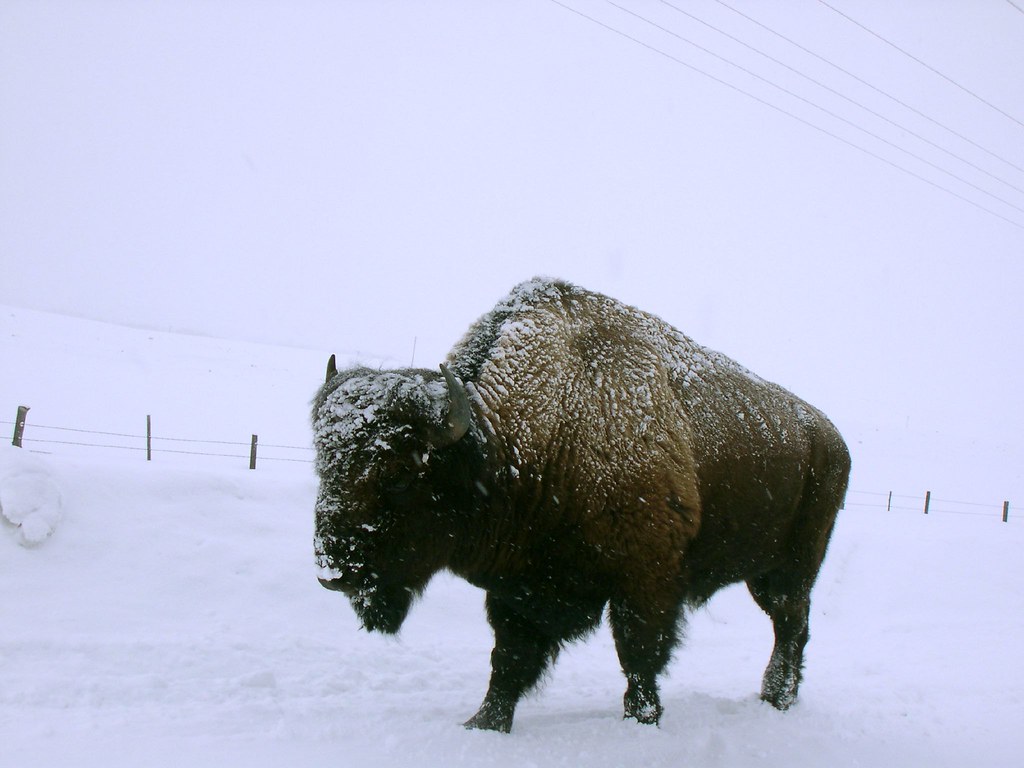
American Bison (Bison bison) on U.S. 287 near West Yellowstone, Montana: photo by Carra (Jim's wife), 22 February 2006

American Bison (Bison bison) bull, Nebraska: photo by Mongo, 12 August 2006

Blonde Bison (Bison bison), Lee G. Simmons Conservation Park, Ashland, Nebraska: photo by Mongo, 22 June 2008

An American Bison (Bison bison) standing its ground against a wolf pack (Canis lupus): photo by Doug Smith, February 2005 (U. S. National Park Service)

American Bison (Bison bison), Yellowstone National Park: photo by Mila Zinkova, 4 July 2008
Bison calves, Yellowstone area: photo by Daniel Mayer, Autumn 2003

Bison herd, Blue Mounds State Park, Minnesota: photo by Rigadoun, 16 May 2006
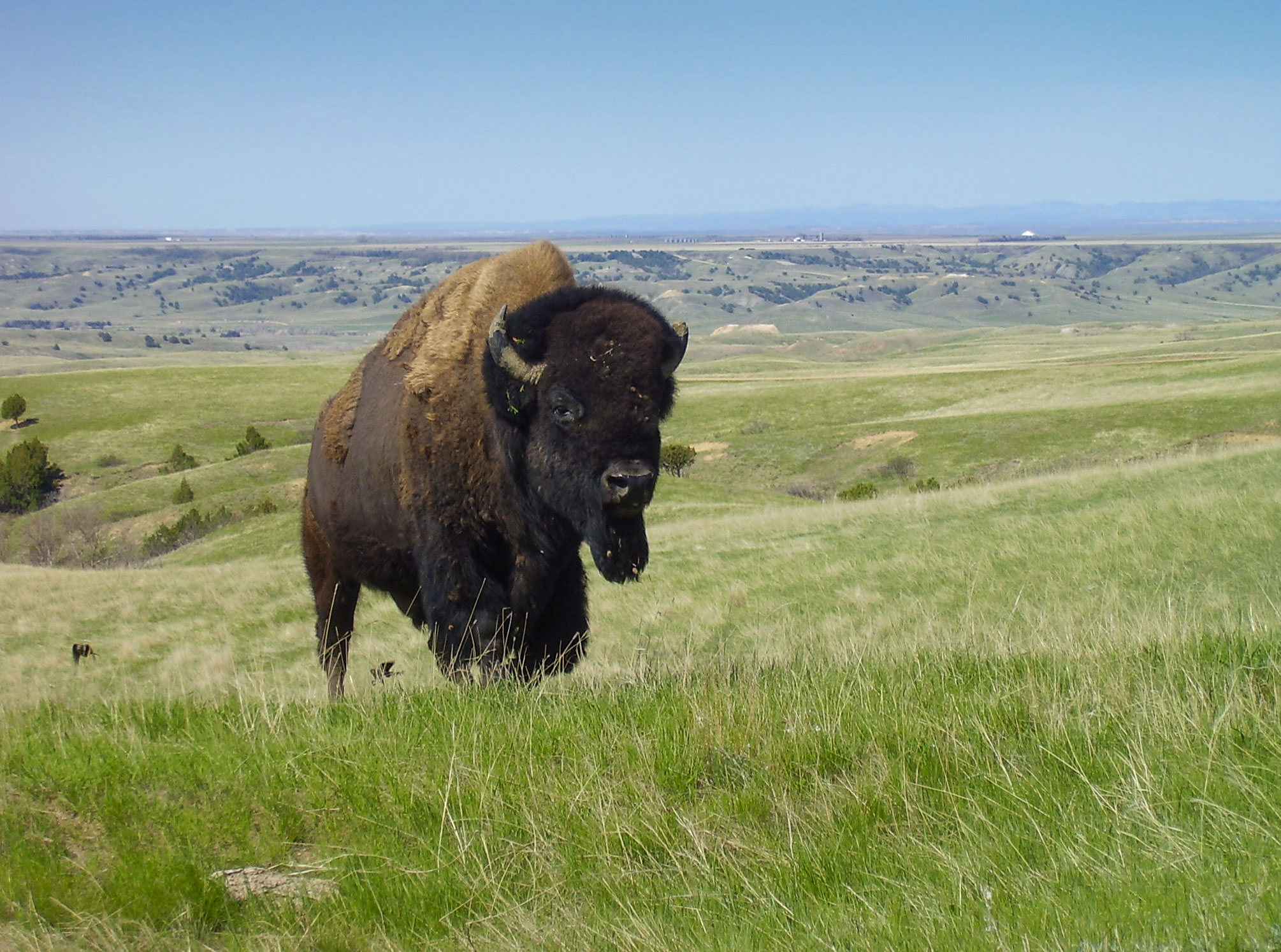
American Bison (Bison bison), Badlands National Park, South Dakota herd, Blue Mounds State Park, Minnesota: photo by U. S. National Park Service, 14 May 2009 (NPS)
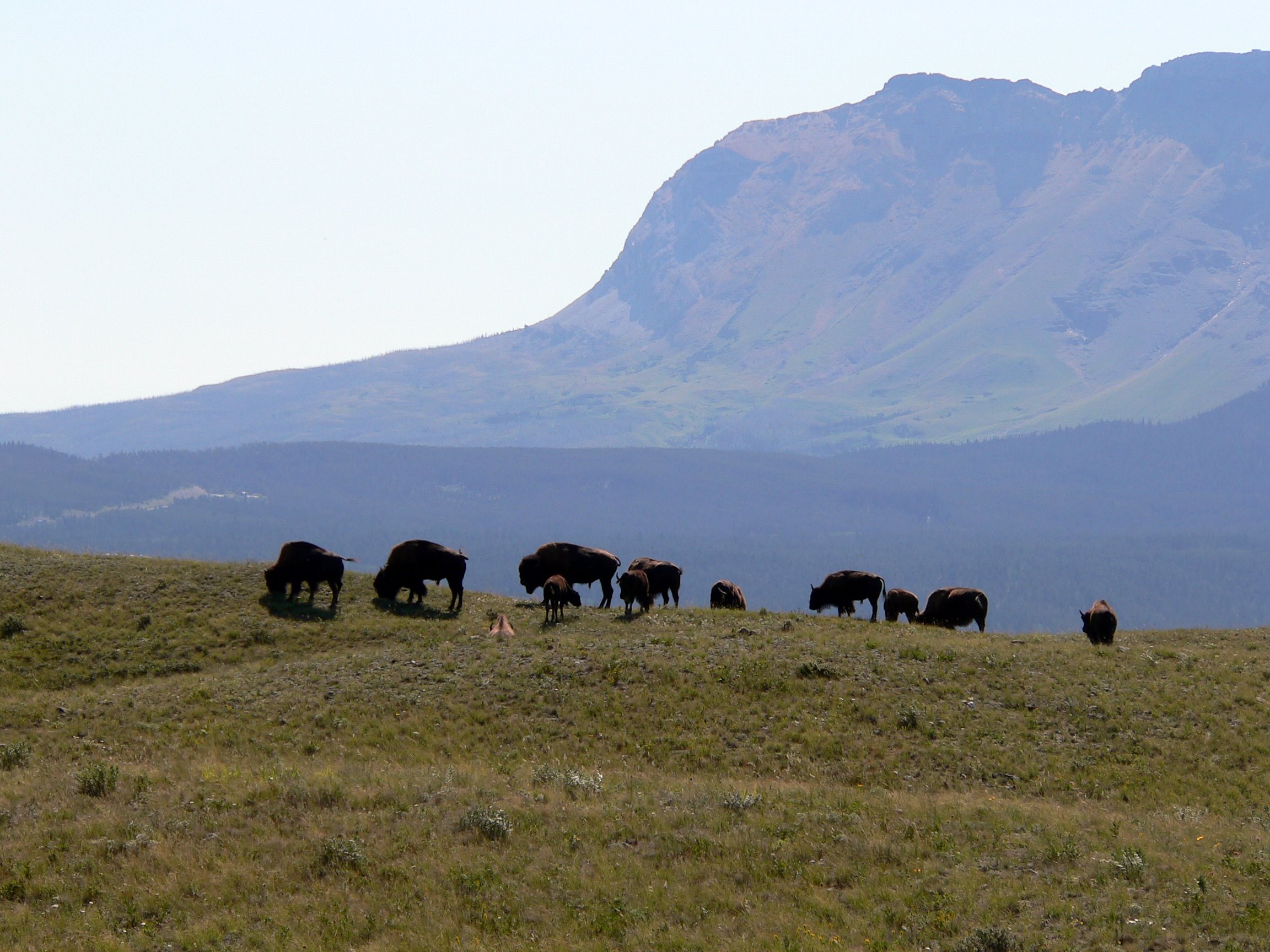
Herd of American Bison (Bison bison), Waterton Lakes National Park, Alberta, Canada: photo by Lee Coursey, 29 August 2009

Herd of American Bison (Bison bison), Waterton Lakes National Park, Alberta, Canada: photo by Lee Coursey, 29 August 2009
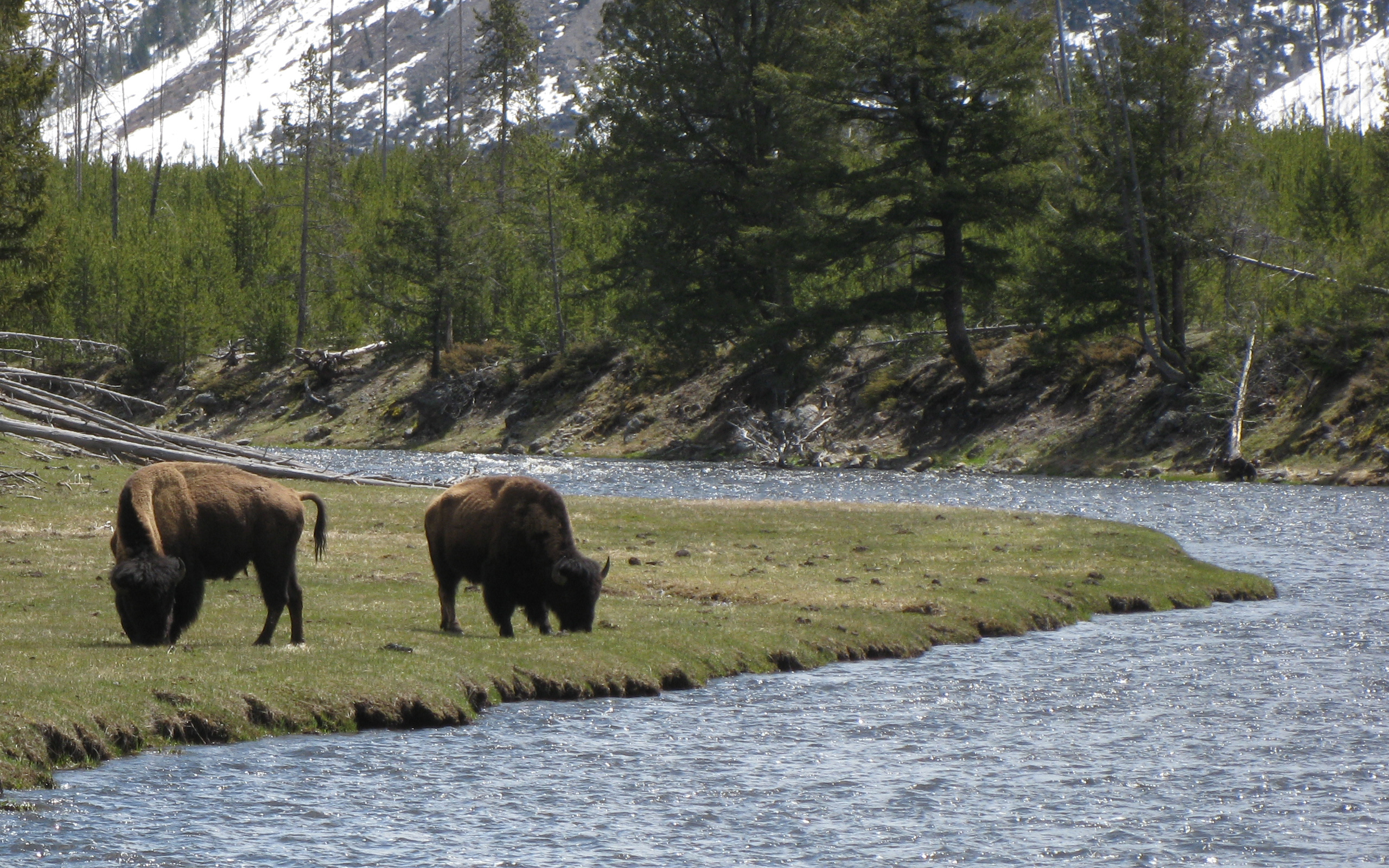
Two American Bison (Bison bison) grazing at a riverbend in Yellowstone National Park: photo by Dcrjsr, 9 May 2006

Bison herd grazing at the National Bison Range, Montana: photo by U. S. Fish and Wildlife Service, 24 June 2008 (USFWS/Dept. of Interior)

Bison crossing a river in Yellowstone National Park: photo by David Monniaux, 2006
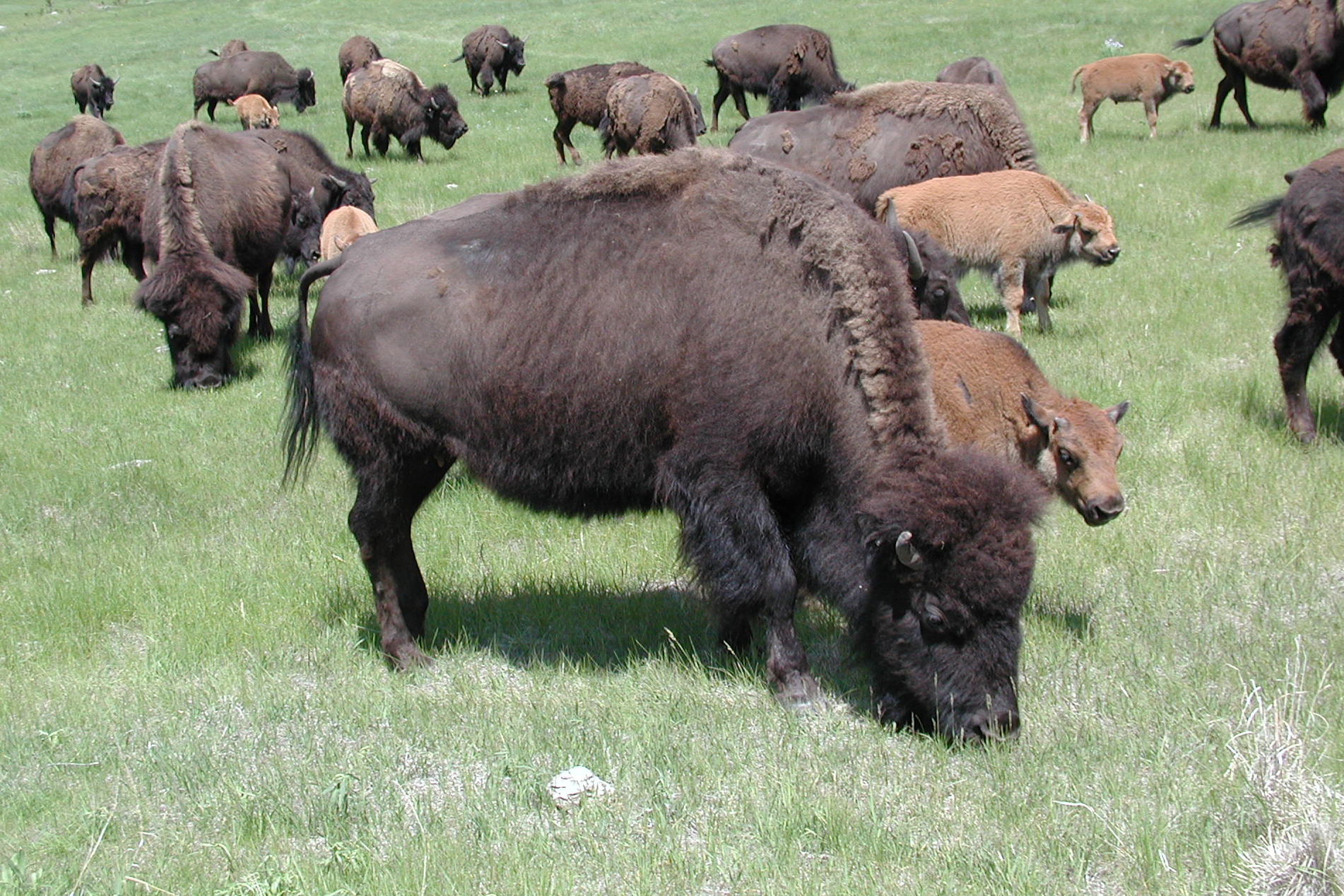
American Bison (Bison bison) grazing in Custer State Park, South Dakota: photo by Buaidh, 8 June 2011

American Bison wallow, Yellowstone National Park: photo by Mila Zinkova, 20 January 2009

Bison roam with Teton Range in background, Montana: photo by Dag Peak, 22 August 2004

Bison out on the range, National Bison Range, Montana: photo by U. S. Fish and Wildlife Service, 24 June 2008 (USFWS/Dept. of Interior)

American Bison (Bison bison) at a watering hole, Nebraska: photo by Mongo, 12 August 2006

Young American Bison (Bison bison), on the prairie close to Fermi National Accelerator Laboratory in Batavia, near Chicago: photo by Marcin Klapczynski, 2004



8 comments:
It's funny and rather wonderful how over the course of my life, the bison, which loomed large in my American kid imagination (in westerns, on nickels, all the rest) re-presented himself as a real fellow citizen. What an extraordinarily beautiful creature. It's appalling that this re-appearance coincided with Ted Turner's chain of bison cuisine restaurants along with other horrors. I was pleased to see that the bison in the photo was only "wallowing." I was worried. I had never seen this activity before. Curtis
Great photos of bison. I used to love going to Custer State Park in the Black Hills and watching the herds graze on tall grass. The calves with such distinctive reddish coats were fun to watch as they frolicked around their mothers who remained intent on feeding. Every now and then there would be an old bull standing alone back in the Ponderosa pines - detached, waiting to die, I suppose. Watching them and the prairie dogs, I would let my imagination go back to the days when these glorious creatures were the mainstay of the Native American life - long before trains and shooters and piles of bones.
They remain such placid, pacific beasts, it's easy to understand the ease with which the early hunters were able to decimate the great herds, with so little resistance.
Marcia, you know their haunts well.
Exploring Wyoming "energy country" in the late 1970s, it was possible to see small buffalo herds roaming some of the vast empty spaces of open pit mines, fossil cattle skulls and leaning snow fences... I suppose they were destined to become "food products," grazing so peacefully and calmly there.
Curtis,
It's extremely difficult for me to understand how a person in these times could swallow a single bite of the flesh of a Bison without gagging on the history.
But what's the saying, there's no arguing with the peckerwood haute cuisine?
And about that wallow -- it's a custom of the animal to roll about in the dirt in order to remove and/or alleviate the irritating effects of infestation by those millions of prairie bugs. The "wallows", once wallowed-in by many animals, often turned into large circular depressions in the land, some of which remained after the buffalo had departed. (They look a bit like UFO landing sites.)
Beautiful
where would a million buffalo go?
a geometric progression of population without harvest is still
possible....
Let the great herds return.
Let them trample over everything, calmly, peacefully, completely.
Bison Bison. How do I love thee. I really am happy with the quality and quantity of pictures on this blog. If anyone is in a place to start up a Bison ranch, now is the time. Replace cattle ranching and we will find ourselves with a self-sustaining and practical source of meat and hides that was intended to cover the face of this land. If only there was greater reverence and respect for these amazing beasts.
Heidi,
Thanks for the good words.
"Reverence". "Respect".
Yes.
Post a Comment